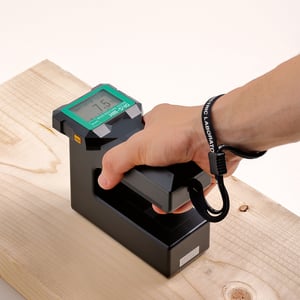 When the unthinkable happens and you have a fire, there are countless things to do to get your life back to normal. Dealing with insurance, the clean-up, and the restoration that follows a fire aren’t even the full extent of the problems, though. If you’re not careful, the water used to extinguish the fire can do nearly as much damage as the fire.
When the unthinkable happens and you have a fire, there are countless things to do to get your life back to normal. Dealing with insurance, the clean-up, and the restoration that follows a fire aren’t even the full extent of the problems, though. If you’re not careful, the water used to extinguish the fire can do nearly as much damage as the fire.
The smell of smoke, the remnants of fire, and the residual soot and ash are challenge enough, but when water is left behind, mold can grow, wood can rot, and issues can rise long after scent of the fire lifts. So how to you go about rebuilding? How can you be sure there is no residual water damage?
Where to Look for Water Damage
After putting out a fire, water can creep almost anywhere, causing mold to grow. So where should you look to ensure that your home is dry and safe from extended water damage? Here are a few places you should check for water:
- Drywall: Drywall can become soft and weak. It can even swell after absorbing too much water, though signs may not be immediately visible upon first glance.
- The floors and under the carpets: Water will follow the laws of gravity and run downwards, collecting below carpets or soaking into wood floors. Wood floors can swell and buckle, and also grow mold if exposed to too much water, and mold can quickly grow below carpet if both are not dealt with as soon as possible.
- The ceiling: After you check the floor, check the ceiling. Ceilings here can also swell, and lose its strength. If there is a fire on one floor, check the floors below for water damage as well; especially the ceilings. Water can collect in the ceiling and lead to bowing, cracking, leaks, and other issues like mold and mildew.
- Along the plumbing and wiring: Places like electrical circuits and outlets can be signs of a larger problem. Between burned walls, pipes, hoses, and circuitry can all be affected by the extreme heat from a fire, creating leaks and additional fire hazards.
- Framing and insulation: Depending on the extent of the fire, the framing and the insulation of your home may have been exposed to water, directly or even indirectly. It’s important to check here in order to prevent wood rot, which could weaken the structure of your home. Certain kinds of insulation can also attract mold and provide a great environment for it to grow, given the right conditions.
What Should You Use to Rebuild?
Yes, you will need tools like shop vacs and fans to dry and remove water. And steam cleaners can help remove the dirt, soot, and smell of smoke in your carpets. There’s only one way to be sure you can truly trust the structural integrity of your home hasn’t been exposed to dangerous amounts of water: You really need to use a moisture meter throughout the rebuilding process.
Upon first inspection, after the dust has settled from a fire, a moisture meter is an important tool. It will help you discover the full extent of the water damage. Fighting a fire is no easy task, and sometimes a great deal of water must be used to ensure the fire is totally out.
A universal moisture meter, or even a near infrared moisture meter are useful and easy tools to discover what’s going on both in plan view and behind the scenes throughout your home. Is the base floor of your home too water damaged to salvage? A wood moisture meter can tell you.
Has the drywall taken in too much water? Our concrete moisture meter has a calibration setting designed specifically to analyze the moisture in drywall. You can use these tools to discover exactly where water restoration, drying, and reinforcements or remodeling needs to occur.
A moisture meter is good to use throughout the rebuilding process as well. It will help you monitor moisture levels along the way. Water restoration is a great way to dry and save what you can, but it’s important to continue to take stock and see if the material you are trying to save is truly salvageable. Too much water in drywall or too much standing water in the carpets for too long can lead to major issues down the road - including mold.
If you have further questions about how our moisture meters can help you rebuild after the harsh damage of a fire, contact us today. Our moisture meters are the perfect tool to remove the guesswork and leave you feeling confident and secure, no matter how much water was required to defeat the fire. And after the feeling of insecurity a fire provides, what is better than feeling confident that water damage won’t get the best of your home?



